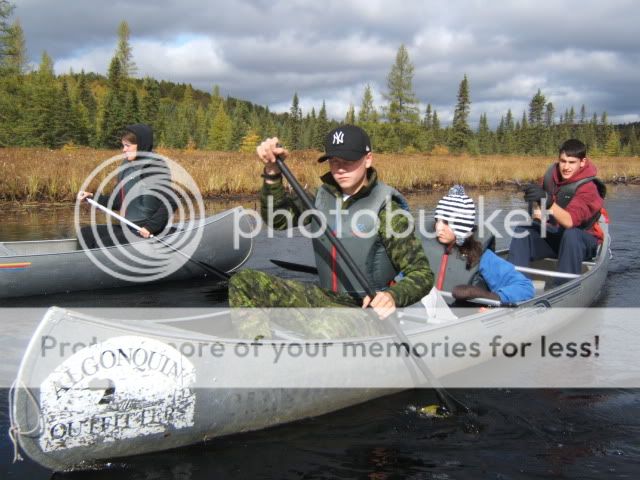Waterdown
Vice-Principal(s): W. Gillis, D. Merlino
Pulse Page Coordinator: Amy Nilsson
Francine Barlow, gr. 12
Now, I am not here to nag the community of smokers to stop smoking, but rather sounding out not only about the massive environmental damage that cigarette butts cause, but also the economic costs that discarded butts create.
With the new “green” attitude that people have adopted in recent years, this issue should become a major concern as cigarette butts each take approximately ten years to biodegrade completely (
One cigarette butt may contaminate 40 litres of water (Shire of Yarra Ranges, N.D) threatening the drinking and swimming water both used by humans and wildlife.
Marine life such as fish, whales and birds that live in marine areas swallow cigarette butts (CoastKeepers, N.D), containing 4000 toxic chemicals (PBS kids: It’s my life, 2006), mistaking them as food.
Discarded cigarette butts can cause fires which lead to the destruction of many animal habitats.
In addition to the environmental costs, cigarette butts also cost society economically. Littered cigarettes on our sidewalks, streets, and beaches leave the area in which they were discarded to be a disgraced, unappealing place to local residents and tourists. Other costs are:
Park, hotel, restaurant and local government employees are paid to pick up the butts (
Discarded cigarette butts can set buildings on fire.
Tourist areas may lose money when tourists will not visit beaches or parks because of number of cigarette butts littering the grounds.
Seatbelts and Cigarettes
Smoking in cars harms children
Jessica Reddy, gr. 12
It is considered illegal for a child to ride in a vehicle without a car seat, or a seatbelt to keep him safe. Why then, with evidence to prove that second-hand smoke is harmful to a child’s health, even in a car with the window rolled down, is it not illegal to smoke in a vehicle occupied by children?
The fact is, parents and other adults alike continue to light cigarettes while in the car with children. Most parents know the damaging effects that the toxic substance may have on the younger passengers in the backseat. There are many, too many health risks to children exposed to second-hand smoke. Children’s immune systems are less developed. Children also absorb more tobacco smoke because they breathe in more air relative to their body weight. As well, children have yet to grasp what they should and should not have to tolerate. Therefore, children are less able or less likely to complain about the smoke. These factors make the effects of the smoke even more dangerous to children than to adults.
What’s worse is that children are easily influenced, especially by the actions of their parents and role models. With this in mind, children exposed to the smoke are more likely to take up smoking themselves, and the harmful cycle will continue. Smoking carries enough health risks to adults as it is… do we really want the damaging effects on our children, our future, to continue?
Children exposed to second-hand smoke are exposed to many serious health risks, such as: reduced lung capacity, more ear infections, double the risk of bronchitis, croup and pneumonia, and a higher risk of heart disease. The list goes on. The children may even have lower test scores in math, reading and logic. Smoking with children in the vehicle should be banned, plain and simple. We cannot continue to let our own selfishness and weakness harm innocent children.
There are over 4000 chemicals in a single cigarette; none of these chemicals is beneficial to our health, or the health of our children. Smoking with a child or children in the vehicle should be banned completely. We, as responsible adults, need to take action. Quitting smoking is the best solution to the problem, albeit the most difficult. Alternatively, there is the simple act of not smoking near pregnant women, infants, children and even teenagers. Children should be kept in a smoke-free environment. We have a duty to protect our children – which is why we expect they wear seatbelts while in an automobile – unless that safety measure is to be extinguished as well.
A Lonely Traveler
Samantha Paczay, gr. 12
A lonely traveler walks in a barren desert
She is thirsty
Life is parched, dehydrated
The cloudless sky blank and bare
Like a freshly cleaned slate
She guards her heart, a cactus in the desert
She looks for shelter but there is no relief
She comes upon a grassy field
The flower’s sweet aroma calls her closer
The suns warmth caresses her skin
Sleeping beauty’s awakening kiss
Her heart floating in a sea of bliss
In the distance a white tidy house
Shaded by the glorious tall green oaks
She walks up to the big welcoming door, looks around
“This is where I belong”
Circus
Jade Onufer, gr. 12
If only a dove were to fly
My soul would unfurl
Like the bloom of a cala lily
White, and chaste, and soft
There is a terror that is masked
A story that is costumed
A red-nosed clown, over-dramatic,
Laughing at the counterfeit tales
Into the circus flooded with nightmares
Rusted with strength and prayers
Surrounded by truth and dares
I watch as the disguises stride by
Their voices are full of money
Money that I will refuse
As if I were Saint Margaret of Cortona,
Sending a letter to my confessor
I plaster my ears with my hands
Praying my head will not hear
What awful speech they murmur
Brain-washing my hope
If only a dove were to fly
My silence would cease
Like a well-rested fiddler
Awaking from a slumber
Chicken Coop
Kim Schotsman, gr. 12
The old wooden door
Squeaks as it opens
Inside a faint light
Can be seen
The light outlines
The dirty brown chickens
The brown wooden boxes
With pointed-pieces
Of yellow-brown straw
Engulf two white eggs
The rice-sized chicken pellets
Are scattered on the floor
The red water bucket
Is nearly frozen with ice
Dusty cob webs
Strung from corner to corner
The large red rooster
Sticks his head through
The square chicken door
And gawks at the chickens
A harsh breeze
Comes through the door
While the chickens huddle
Closer together
The Betrayal of Fox: A Fable
Lainey Darlison, gr. 9
The farm was owned by a wealthy farmer who had struck oil the previous year. Now being a man of society the farmer took great joy in hunting with his hounds and his thoroughbred horse. Fox was a large threat to the chicken coop as that was Fox’s favourite feast. The Fox had many close encounters with the farmer on his journeys to the farm. Aggravated by Fox’s actions, the farmer set a trap for Fox in the forest.
After returning from his hunt Fox was about to enter his home when he felt the weight of a lion’s jaw on his tail. Unable to free himself Fox called for help and after a few moments Fawn replied.
“Why did you cry for help Mr. Fox?” asked the Fawn. “Are you in pain?” questioned Fawn.
“The farmer at the bottom of the glen has imprisoned me in the metal trap.” Fox explained.
“It looks painful.” Fawn expressed.
“No it’s not too bad, quite painless.” Fox said.
“Really?” asked Fawn.
“No not really it is very painful.” Fox said sarcastically.
Fawn did not catch Fox’s sarcastic remark and continued to help Fox out of the trap. Fox was not able to walk very well and was in considerable pain. The two heard the faint howls of a pack of hunting hounds. Fawn lifted fox into a hollowed out oak tree so that he would not be sought out by the hounds. As the farmer approached the fox’s secret hideout Fawn slowly moved toward the farmer.
“Have you completed your side of the agreement?” questioned the farmer.
“Yes he is in a hollow oak tree one hundred feet north from where you stand,” Said Fawn. “What about your part of the contract?” asked Fawn.
“You are granted full privileges to my produce and to my barn during harsh weather.”
“Thank you Sir I must return to my family.”
And with that the farmer found Fox and at long last ended the chase.
*A man may smile yet be a villain*
The Road
Amanda Geiger, gr. 12
Wailing mothers and children run down the crowded street
Death reverberates deafeningly through the city
The stench of hatred pollutes the air and suffocates the innocent
Red flames rise from crumbling remains to meet a smoke filled sky
Blameless victims flee their homes like startled birds that fly
Here I walk, across the world, on a long and winding road
To my left and right, I am surrounded by Mother Nature
The never-ending fields are filled with bright, colorful petals and vivid green leaves
The path that I saunter down cannot be more different from the streets that the innocent trod
We all deserve to walk the same path, long, and winding, but filled with wonder and splendor
I hope some day they can join me on my path, and the world will be as one
The Bear and the Moose
Mitchell Kieft, gr. 10
Two years ago in the heart of
“Last Tuesday, a hunter came up to my wife and told her that potatoes were going to fall from the sky on the first of October” said Bear. “OH NO! I better make my house stronger to protect it from the potatoes” said Moose.
Over the next two weeks Moose spent all his time preparing his house for the falling potatoes. The first of October came and potatoes never fell from the sky. Moose was upset because he spent all his money and time preparing his house and it was not true. Moose realized that Bear was always lying to him and getting him in trouble. One fall day, Moose planned on going into the forest on his own to find some food.
”I don’t think that you should go into the forest on your own; there are hunters out right now. It is dangerous” said Bear.
“I don’t believe you. You are always lying to me and getting me into trouble. I am going on my own to get some food” yelled Moose.
Moose went out into the forest to get some food. While he was looking around, he heard a noise. He got a little frightened but never though anything about it. All of a sudden, he felt this shooting pain on the left side of chest. He fell to the ground in pain. He looked at his chest and saw blood shooting out of him. There was an arrow stuck inside of him and he had no one around to help him. He laid there helpless, thinking about how he should have believed Bear this time. He should have not gone into the forest alone.
“Liars are not believed even when they tell the truth”
Art Gallery
Old Times by Stephanie Rotz, Grade 11
Rushing Water by Nichole Poirier, Grade 11
Carnival by Shankia Thomas, Grade 11





























